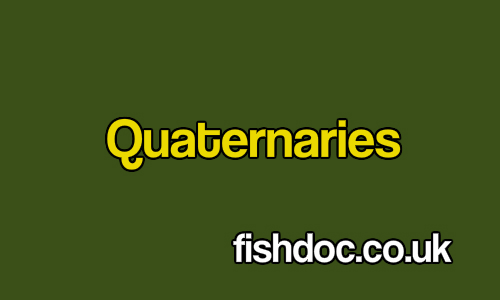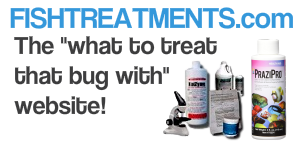Quaternary ammonia compounds as fish disease treatments:Quaternary ammonia compounds (QACs) are powerful disinfectants with additional surfactant (detergent) action. As well as acting against bacteria, their surfactant action removes excess mucus containing parasites and bacteria. They are particularly suited to treating external bacterial infections such as Bacterial Gill Disease. In removing excess mucus from the gills they can help make ‘breathing’ easier. Treatment of bacterial gill disease can be assisting by using quaternary ammonia compounds in conjunction with, but not at the same time, chloramine-T. Alternating these two treatments can be successful. QACs can also be used diluted to clean wounds and ulcers – the dual anti-bacterial and detergent action helping to kill bacteria and remove debris from the wound. Commonly used QACs are benzalkonium chloride, Hyamine 3500 and Hyamine 1622. Popular UK proprietary brands are Vetark’s Ark-Klens’ and NT Labs ‘Gill Wash’. I would strongly recommend using these products and the instructions given by the manufacturers. Using QACsQuaternary ammonia compounds are more toxic at high temperatures and in soft water. In such conditions the recommended doses should be halved. Great care should be taken when calculating doses and it is better to err on the side of caution. Several low doses over a longer period of time are more beneficial than trying to resolve the problem in one go with a higher dose. QACs are not recommended as a pond treatment and should ideally be used in a proper sized treatment tank. Any beneficial effects are liable to be negated if the fish is unduly stress by a prolonged treatment in an undersized tank or bowl. [TIP: Try your local builders merchant for a cheap round cold water tank – ideal for fish treatments. Alternatively you can pay four times the price for a BLUE koi bowl! Your choice.] The most important factor in treating gill disease is an early diagnosis and commencement of treatment. Too often action isn’t taken until the disease is in a very advanced state and beyond resolution. Dosage rates:
See the fish disease section for more details about specific parasites or diseases
|

